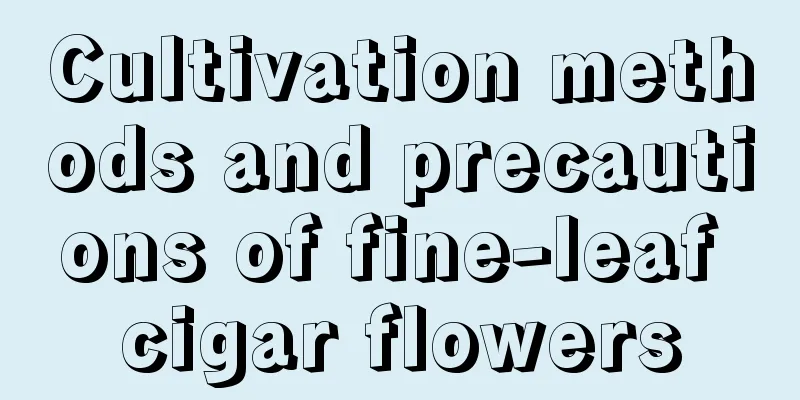Greenhouse soilless tomato planting technology management

|
Tomatoes , also known as tomatoes, are a common fruit and vegetable. Greenhouse tomatoes are grown using soilless cultivation technology, which not only has high yields but also tastes good. Below we will introduce to you the technical management of soilless tomato cultivation in greenhouse. 1. Seedling cultivation Choose tomato varieties with large, full seeds, vigorous growth, strong disease resistance, and good quality. Soak the seeds in warm water for several hours, rub the attachments on the surface of the seeds with your hands, take out the seeds and disinfect them. After wrapping the seeds in wet cloth and disinfecting them, place them in a constant temperature box for germination. 2. Cultivation medium The substrate can be vermiculite, sawdust, rock wool or a mixed substrate. If substrate bag culture is used, a substrate with a lighter texture should be selected. Pure perlite can be used, or perlite mixed with 1/3 to 1/2 peat. If a mixed matrix is used, the raw materials should be piled into a thickness of 25 cm 15 days before mixing and then sprayed with a wet film to disinfect and treat bacteria. 3. Irrigation equipment Using tap water equipment or well water, you can also build a water storage tank with a water level difference of 1.5m to collect rainwater from the greenhouse or shed roof as a water source. Individual glass greenhouses can be equipped with independent irrigation equipment. Plastic pipes can be used for the main pipes in the shed and the drip irrigation tapes inside the cultivation troughs. It is only necessary to lay 1 to 2 pipes and install a 0.1mm thick plastic film to effectively prevent the drip irrigation water from leaking. 4. Planting and cultivation The cultivation trough is fully irrigated with water, and after the water has fully penetrated into the soil, planting can be carried out. Water promptly after planting. 5. Fertilization and irrigation management In the first 3 to 5 days after planting, irrigation should be done on a sunny day; after fruit setting, irrigation should be done once in the morning and once in the afternoon every day, with the irrigation time controlled within 15 to 20 minutes. Fertilization should be carried out 20 days after planting, and once every 7 days after fruit setting, with 25g of fertilizer applied each time. During this process, avoid applying fertilizer to the roots of the plants. Be sure to mix it into the substrate to ensure healthy growth of the plants. 6. Hanging vines and pruning When the plant grows to 6 to 7 leaves, you can use plastic ropes to hang the vines to effectively ensure the vertical growth of the plant; for pruning, you should use single-trunk pruning and remove all side branches in the leaf axils. 7. Protect flowers and fruits Use 10% to 15% 2,4-D solution to dip the flowers between 7:00 and 9:00 every day to effectively increase the fruit setting rate, retain 3 to 4 fruits, and promptly remove deformed fruits, diseased fruits, and rotten fruits to ensure the quality of tomato fruits. That’s it |
<<: Bufuna planting technology and cultivation management
>>: Artificial propagation of termites and cultivation of Alternaria albuminata
Recommend
What are the flower types of peony?
Single petal peony The single-petal peony has mor...
When is the best time to sow daisy?
Shasta daisy planting time Beach daisy is a plant...
8 acres of wasteland, a 66-year-old man spent 8 years growing flowers and vegetables, and finally turned it into a beautiful manor!
"This garden hidden in the bamboo sea is und...
How to propagate Jasper Lotus and what to pay attention to
Jade Lotus Reproduction Method Jade Lotus is gene...
Petunia planting and maintenance methods
Preparation The main preparation work includes: s...
What is the appropriate row spacing and plant spacing for spinach planting?
Spinach planting spacing Planting spinach is very...
Does kale prefer shade or sun?
Does kale prefer shade or sun? Kale is relatively...
How much is the yield per mu of peony? The yield per mu and profit
Peony yield per mu If peony is used as fresh cut ...
Foreigners also like Chinese bonsai, but they actually grow them like this, I'm dumbfounded...
Various kinds of succulent bonsai There is a fore...
What kind of soil is best for growing Australian fir?
Australian fir likes to grow in slightly acidic s...
Did you know that these small objects can be used as flower pots?
Coconut Shell Flower Pot Open the coconut, dig ou...
How to cultivate Taiwan Podocarpus
1. Soil Taiwan Podocarpus grows in loose, fertile...
How to care for newly bought purple bamboo plum
1. Temperature Purple bamboo plum likes a warm en...
How to plant spring fern seeds
1. Sowing steps 1. Prepare a shallow container wi...
Take you to magical South Africa to see succulents, it will be an eye-opener!
Compared with those beautiful flesh in Japan, all...









